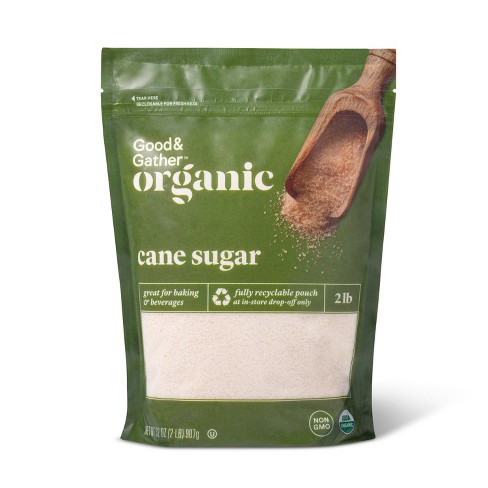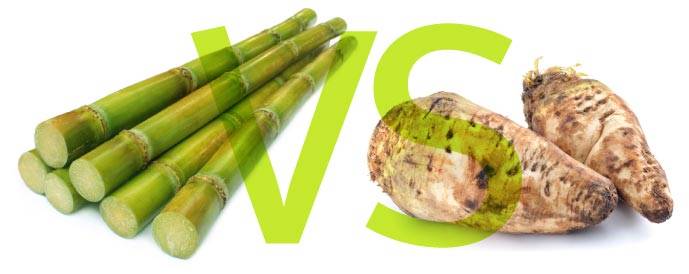The Journey of Cane Sugar Processing: From Harvest to Crystals
The Journey of Cane Sugar Processing: From Harvest to Crystals
Blog Article
A Comprehensive Overview to the Ecological Effect and Sustainability Practices in Walking Cane Sugar Processing
The environmental impact of cane sugar processing presents a complicated range of difficulties that warrant cautious exam. From dirt destruction and too much water use to the carbon impact related to farming and manufacturing, the effects of typical techniques are far-ranging. On the other hand, the fostering of ingenious sustainability steps provides a pathway toward more liable production approaches. Recognizing the interaction between these issues is essential for stakeholders in the industry. What specific techniques can be carried out to strike a balance between productivity and ecological stewardship? The solutions depend on a better take a look at both the challenges and possible options.
Introduction of Cane Sugar Handling
Cane sugar handling involves a collection of systematic actions that change sugarcane into polished sugar. Initially, collected sugarcane is delivered to processing centers, where it undertakes cleaning up to get rid of soil and particles. Following this, the walking cane is crushed to remove juice, which is after that cleared up by getting rid of pollutants via heating and the addition of lime.
The clarified juice goes through evaporation, where water is eliminated to focus the sugar web content. These crystals are divided from the remaining syrup using centrifugation, resulting in raw sugar.
The final product is after that dried out and packaged for circulation. Throughout this whole procedure, maintaining efficiency and high quality control is necessary to make sure the sugar fulfills sector criteria. Each action in walking cane sugar handling not only adds to the end product however likewise has ramifications for source use and waste generation, setting the stage for discussions on sustainability and environmental effects related to sugar production.
Environmental Difficulties of Manufacturing
The production of cane sugar presents several significant ecological obstacles that warrant focus. One main worry is the substantial use agrochemicals, including fertilizers and chemicals, which can cause soil degradation, biodiversity loss, and contamination of regional water sources. The runoff from sugarcane areas typically carries these chemicals right into close-by ecological communities, interfering with marine life and influencing the health and wellness of neighborhoods reliant on these water bodies.
Another obstacle is the high energy consumption linked with sugarcane processing. The boiling and refining stages call for considerable heat, largely produced by burning nonrenewable fuel sources, contributing to greenhouse gas emissions. In addition, the expansive land location required for sugarcane farming can cause deforestation and environment damage, more worsening climate adjustment and threatening wild animals.
Moreover, the labor techniques in some regions elevate ethical problems, as workers might face inadequate working conditions and insufficient wages. This circumstance frequently bolsters a cycle of poverty in regional communities. Cane Sugar Processing. Resolving these environmental difficulties is essential for creating more sustainable techniques in cane sugar manufacturing, inevitably benefiting both the atmosphere and the areas associated with this market
Water and Land Usage Impact
Water resources and land usage are crucial elements in the walking stick sugar industry that considerably impact the environment. The growing of sugarcane requires considerable water input, with estimates recommending that it can eat approximately 2,000 liters of water per kg of sugar generated. This intensive usage of water often causes deficiency of local water resources, affecting not only the sugarcane vineyards yet additionally bordering ecosystems and neighborhoods that depend on the very same water resources for farming and residential usage.

Furthermore, land usage for sugarcane cultivation can cause deforestation and the conversion of natural environments into monoculture vineyards. This technique decreases biodiversity, interferes with local environments, and adds to soil destruction. The expansion of sugarcane areas often trespasses on beneficial agricultural land, producing competitors for sources between food and biofuel manufacturing.
Lasting practices, such as optimizing watering strategies and implementing crop rotation, are important to mitigate these effects. By embracing extra effective water usage and land administration approaches, the cane sugar industry can decrease its environmental impact, making certain a balance between agricultural productivity and environmental conservation.
Greenhouse Gas Emissions
Greenhouse gas exhausts stand for a substantial this environmental concern within the cane sugar processing sector, particularly as farming methods broaden to fulfill worldwide demand. The cultivation of sugarcane, a crop that grows in exotic climates, relies greatly on artificial plant foods and chemicals, which add to laughing gas exhausts. In addition, land-use modifications, consisting of deforestation for new sugarcane ranches, release carbon dioxide kept in greenery and soil.
Throughout handling, energy consumption is an additional significant source of greenhouse gas exhausts - Cane Sugar Processing. Many sugar mills make use of nonrenewable fuel sources to power machinery and create warm, resulting in substantial carbon impacts. Additionally, the transportation of raw sugarcane and completed items includes layers of emissions via fuel burning in automobiles
This includes reviewing current agricultural methods, refining techniques, and transport systems to recognize areas for enhancement and reduction. Resolving greenhouse gas emissions is vital for cultivating a more sustainable walking stick sugar market in a transforming environment.

Lasting Practices and Innovations
Sustainable techniques and advancements are increasingly essential in the walking stick sugar processing market as stakeholders seek to lower environmental impacts while keeping productivity. One substantial development is the execution of integrated plant management, which enhances source use by incorporating soil monitoring, pest control, and crop rotation strategies. This approach improves return while reducing chemical inputs and maintaining soil health and wellness.
Moreover, the adoption of eco-friendly energy sources, such as biomass from sugarcane deposits, has actually gained traction - Cane Sugar Processing. By converting waste items right into energy, processing centers can lower their reliance on fossil fuels, therefore lowering greenhouse gas emissions
Water administration techniques have also seen enhancements via the recycling and reusing of water in processing plants, substantially lowering freshwater consumption. Developments in innovation, such as accuracy farming, enable farmers to monitor crop health and wellness and source use better, guaranteeing sustainable cultivation practices.
Additionally, accreditation programs like Fair Profession and Rain forest Partnership urge eco liable farming techniques and advertise social equity within the supply chain. By welcoming these lasting techniques and technologies, the cane sugar handling industry can improve its durability and add positively to ecological stewardship.
Final Thought
The environmental impact of walking cane sugar processing presents considerable challenges, including dirt degradation, high water consumption, and greenhouse gas exhausts, along with moral worries connected to labor practices. Addressing these problems through sustainable techniques, such as incorporated plant management, renewable resource adoption, and read here water recycling, is necessary. By promoting environmentally liable and socially equitable techniques in sugar manufacturing, the industry can alleviate its damaging impacts, making certain a much more sustainable future for both ecosystems and neighborhoods involved in this field.
Walking stick sugar processing includes a series of organized steps that change sugarcane into polished sugar. Each step in walking cane sugar processing not just contributes to the last product yet also has effects for resource usage and waste generation, setting the stage for conversations on sustainability and environmental influences connected with sugar production.
Greenhouse gas discharges represent a considerable ecological worry within the walking cane sugar processing sector, particularly as try this site farming techniques broaden to fulfill global demand.Lasting practices and technologies are significantly vital in the walking stick sugar handling industry as stakeholders seek to lower environmental effects while keeping productivity.The environmental effect of walking cane sugar processing presents considerable obstacles, including dirt destruction, high water consumption, and greenhouse gas emissions, together with moral concerns related to labor methods.
Report this page